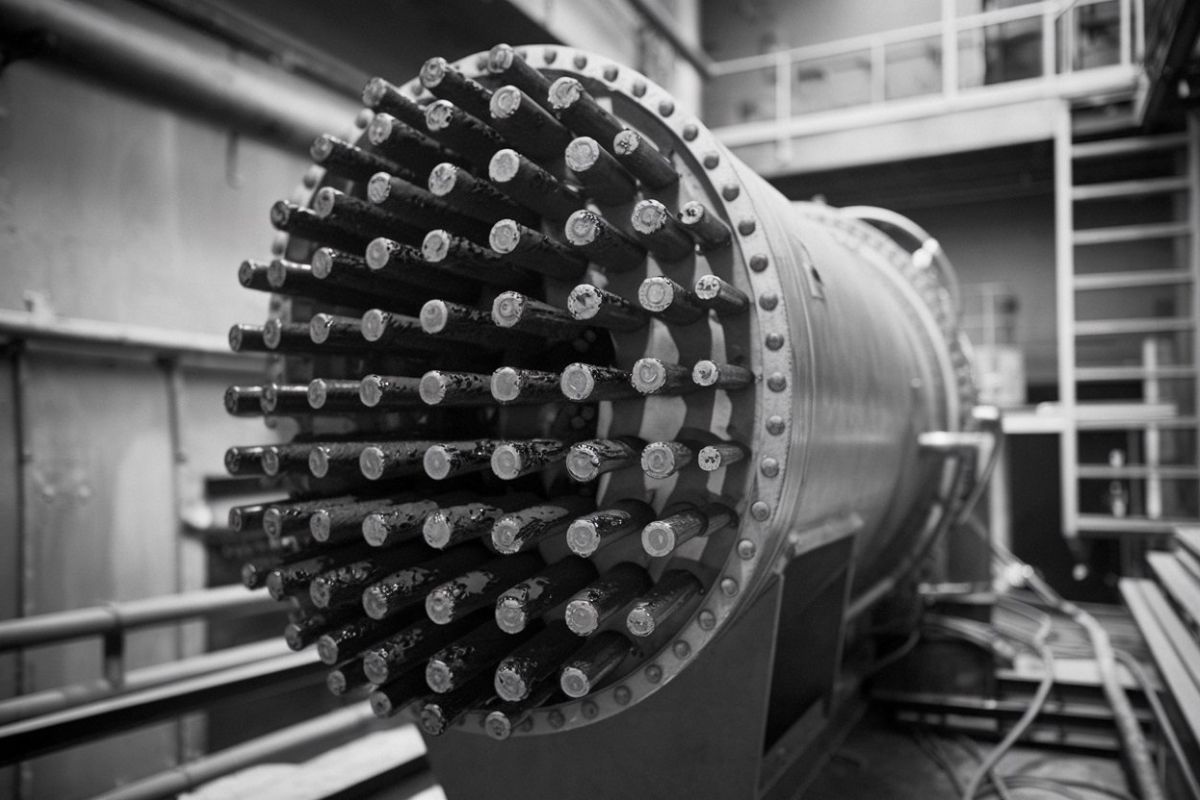
Plutonium–Zirconium might sound like a mouthful, but these two elements play a crucial role in nuclear science and technology. Plutonium, a heavy, radioactive metal, is famous for its use in nuclear reactors and weapons. Zirconium, on the other hand, is a corrosion-resistant metal often used in nuclear reactors to encase fuel rods. Together, they form alloys that are vital for the safe and efficient operation of nuclear reactors. Curious about how these elements interact and why they are so important? Let's dive into 30 intriguing facts about Plutonium–Zirconium that will shed light on their significance in the world of nuclear energy.
Key Takeaways:
- Plutonium–Zirconium alloys are super strong and used in nuclear reactors to make energy. They can also help reduce nuclear waste and may be part of future clean energy solutions.
- Scientists are working on making Plutonium–Zirconium alloys even better for reactors and safer for the environment. They could play a big role in clean energy in the future.
What is Plutonium–Zirconium?
Plutonium–Zirconium is an alloy that combines two fascinating elements: plutonium and zirconium. This combination has unique properties and applications, especially in nuclear technology. Let's dive into some intriguing facts about this alloy.
-
Plutonium–Zirconium alloys are primarily used in nuclear reactors due to their ability to withstand high temperatures and radiation.
-
Plutonium, a radioactive element, was first discovered in 1940 by a team led by Glenn T. Seaborg.
-
Zirconium, known for its corrosion resistance, was discovered much earlier in 1789 by Martin Heinrich Klaproth.
-
The alloy is often used in fast breeder reactors, which generate more fissile material than they consume.
-
Plutonium–Zirconium alloys can be used to create nuclear fuel rods, which are essential components of nuclear reactors.
Properties of Plutonium–Zirconium
Understanding the properties of this alloy helps in appreciating its applications and significance.
-
Plutonium–Zirconium alloys have a high melting point, making them suitable for high-temperature environments.
-
The alloy exhibits excellent corrosion resistance, a property inherited from zirconium.
-
Plutonium–Zirconium is known for its mechanical strength, which is crucial for maintaining structural integrity in reactors.
-
The alloy has a high density, which is beneficial for nuclear fuel applications.
-
Plutonium–Zirconium can absorb neutrons efficiently, aiding in the nuclear fission process.
Applications in Nuclear Technology
The unique properties of Plutonium–Zirconium make it invaluable in various nuclear technology applications.
-
Fast breeder reactors use Plutonium–Zirconium alloys to produce more plutonium fuel.
-
The alloy is used in mixed oxide (MOX) fuel, which combines plutonium with uranium.
-
Plutonium–Zirconium alloys help in reducing nuclear waste by utilizing plutonium from spent nuclear fuel.
-
The alloy is also used in space exploration, providing power for spacecraft through radioisotope thermoelectric generators (RTGs).
-
Plutonium–Zirconium alloys are being researched for potential use in advanced nuclear reactors, such as Generation IV reactors.
Safety and Handling
Given the radioactive nature of plutonium, safety and handling are paramount when dealing with Plutonium–Zirconium alloys.
-
Plutonium is highly toxic and requires stringent safety measures to prevent exposure.
-
Handling Plutonium–Zirconium alloys involves using specialized equipment to shield against radiation.
-
Workers dealing with this alloy must wear protective clothing and use remote handling tools.
-
Facilities that process Plutonium–Zirconium alloys are designed with multiple layers of containment to prevent leaks.
-
Regular monitoring and maintenance of equipment are essential to ensure the safety of personnel and the environment.
Environmental Impact
The environmental impact of using Plutonium–Zirconium alloys is a significant consideration in their application.
-
Using Plutonium–Zirconium alloys in reactors can help reduce the amount of nuclear waste.
-
The alloy's ability to recycle plutonium from spent fuel contributes to more sustainable nuclear energy.
-
However, the production and handling of plutonium pose environmental risks if not managed properly.
-
Research is ongoing to develop safer and more efficient methods for handling and disposing of Plutonium–Zirconium alloys.
-
Advances in technology aim to minimize the environmental footprint of nuclear energy, making it a cleaner alternative to fossil fuels.
Future Prospects
The future of Plutonium–Zirconium alloys looks promising with ongoing research and technological advancements.
-
Scientists are exploring new ways to enhance the properties of Plutonium–Zirconium alloys for better performance in reactors.
-
The development of advanced nuclear reactors could increase the demand for Plutonium–Zirconium alloys.
-
Innovations in recycling and reprocessing spent nuclear fuel could make Plutonium–Zirconium alloys more sustainable.
-
International collaborations are focusing on improving the safety and efficiency of using Plutonium–Zirconium alloys in nuclear technology.
-
The potential for Plutonium–Zirconium alloys to contribute to clean energy solutions makes them a key area of research in the quest for sustainable energy.
Final Thoughts on Plutonium–Zirconium
Plutonium–Zirconium alloys are fascinating materials with unique properties. These alloys play a crucial role in nuclear reactors, offering stability and efficiency. Their ability to withstand high temperatures and resist corrosion makes them invaluable in the energy sector. Understanding their composition and behavior helps scientists and engineers develop safer, more efficient nuclear technologies.
The combination of plutonium's radioactive properties with zirconium's durability creates a powerful material. This alloy's applications extend beyond reactors, potentially impacting various fields, including space exploration and medical research. As technology advances, the importance of these alloys will likely grow, driving further innovation.
In summary, Plutonium–Zirconium alloys are more than just a scientific curiosity. They represent a key component in the quest for sustainable energy and technological progress. Keeping an eye on developments in this area promises exciting advancements for the future.
Frequently Asked Questions
Was this page helpful?
Our commitment to delivering trustworthy and engaging content is at the heart of what we do. Each fact on our site is contributed by real users like you, bringing a wealth of diverse insights and information. To ensure the highest standards of accuracy and reliability, our dedicated editors meticulously review each submission. This process guarantees that the facts we share are not only fascinating but also credible. Trust in our commitment to quality and authenticity as you explore and learn with us.
